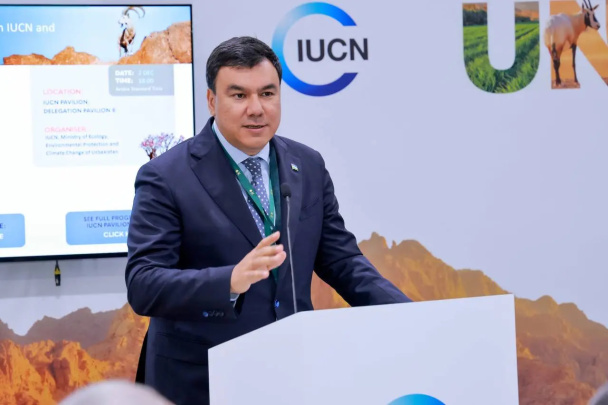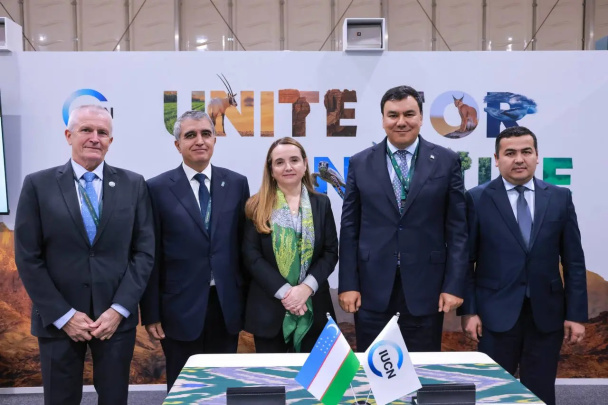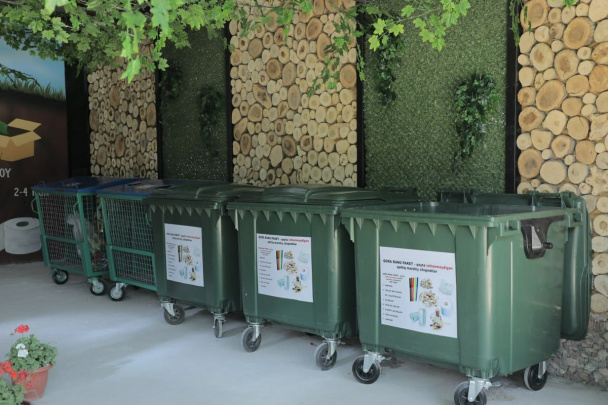Water scarcity in Uzbekistan: Probable drought and escalating environmental challenges
According to research, in the next 20 years, the demand for water in Uzbekistan will increase significantly and the available water resources will decrease sharply, which will increase the current water shortage up to five times. By that time, Uzbekistan will be among the red regions in terms of water shortage. What are the likely scenarios of dehydration?

Due to the natural growth of the population and an increase in water consumption, as a result of climate change, anomalous hot weather is becoming a new norm. The number of snowy days is decreasing. Irrational use of water resources, serious environmental problems and water shortages are occurring in Central Asia.
Regional aspects of water scarcity
Since Central Asia is an arid region far from oceans and seas, water resources are of strategic importance here. The countries of the region are divided in terms of water resources. Countries such as Kazakhstan, Turkmenistan and Uzbekistan are considered “downstream” countries, while Tajikistan and Kyrgyzstan are considered “upstream” countries.
In terms of supply, the countries of the first group are connected to the countries of the second group. In particular, 20% of the total water resources used in Uzbekistan are formed inside the country, and 80% are formed in neighboring Tajikistan and Kyrgyzstan. These two relatively poor “upstream” countries are interested in generating and exporting more electricity through the construction of hydroelectric dams and reservoirs, which creates serious problems for agricultural water supply in other countries in the region. This aspect has been the main root of conflict and disagreement between the countries of Central Asia for many years.
Although the “water diplomacy” carried out by the Uzbek government in recent years has significantly eased the tension in the use of transboundary water resources in the region, until now general rules for the use of water based on international standards have not been developed between the countries of Central Asia.
According to the WB experts, by 2050 water resources in the Syrdarya basin are expected to decrease by 5% and in the Amudarya basin by 15%. In 2050, the shortage of fresh water in Central Asia could lead to an 11% decrease in GDP.
Due to increasing water scarcity, there is a possibility of problematic situations between upstream countries and downstream countries on the following issues:
ꞏ increased desire for unilateral and non-coordinated management of water resources of transboundary rivers;
ꞏ the growing tendency to commercialize water and treat it as a commodity;
ꞏ increased desire of upstream countries to build new large hydroelectric reservoirs in the main transboundary tributaries of Amudarya and Syrdarya to meet domestic energy needs as a result of climate change. Currently, in Kyrgyzstan, 85 percent, and in Tajikistan, 91 percent of electricity is produced by hydroelectric power plants. The reduction of water resources will have a serious impact on increasing electricity shortages in these countries. For comparison, the share of hydropower stations in energy supply is 15% in Uzbekistan and 10% in Kazakhstan.
Based on the above, it is important to reach a new agreement on the issue of transboundary water use that is stable and equally beneficial for the parties.
Climate change
Abnormally hot weather has become the new norm in Central Asia in recent years, with more hot days than ever before.
An increase in air temperature is one of the main factors that increase the water shortage. The main source of water in the region is snow and glaciers, but most of it is formed due to snow. Mountains also perform the function of storing water for the summer season in return for the winter snows. The decreasing amount of precipitation in the form of snow is compounding the problem and creating serious problems in storing water for the summer season. As a result, the shrinking trend of century-old glaciers continues.
According to experts’ calculations, in the last 40 years, 30% of the area of more than 8,000 glaciers in Tajikistan and 16% of the area of about 10,000 glaciers in Kyrgyzstan have melted. At the same time, in the last 20-30 years, the amount of precipitation in the region has also decreased significantly.
Water shortage in Uzbekistan
In recent years, the water shortage observed in Uzbekistan is occurring in two directions: first of all, there is not enough clean drinking water for the needs of the population, and serious problems are arising in the provision of agricultural water resources.
The Ministry of Water Management informed Kun.uz that in the 80s of the last century, the annual water consumption of Uzbekistan was estimated at 64 billion cubic meters. Of this, 20% corresponds to rivers and streams within the republic, underground water reserves, and 80% to the amount of water taken from transboundary rivers formed in the territory of neighboring republics. The average annual amount of water used in the republic was 53.9 billion cubic meters in 2019, 51.2 billion cubic meters in 2020, and 43.2 billion cubic meters in 2021.
According to Anvar Muhammadaliyev, chief specialist of Uzsuvtaminot JSC, the shortage of water in the country, in turn, leads to a shortage of clean drinking water. In the last 15 years, the annual volume of water per capita has decreased from 3048 cubic meters to 1589 cubic meters.
According to the WB analytical indicators, by 2050 the demand for water in Uzbekistan will increase from 59 cubic km to 62-63 cubic km, and the available water resources will decrease from 57 cubic km to 52-53 cubic km, which will increase the current water shortage (from 2 cubic km to 11-12 cubic km) increases by five times.
Environmental problems that are becoming more serious day by day
One of the most unfortunate manifestations of misuse of water resources is the drying up of the Aral Sea. As a result, a new desert - Aralkum - appeared on an area of 5 million hectares. Dust and salt storms from the dry layer of the sea affect both the irrigated lands and the health of the population.
In addition to the Aral Sea, the ecological situation in the Aydar-Arnasoy lake system continues to deteriorate year by year.
Personnel problem
In Uzbekistan, the average monthly salary of employees of water management organizations is considered low compared to the average salary in the country. This reduces the social status and attractiveness of the profession of water worker and prevents the retention of highly qualified professionals. Talented young people have almost no incentive to study in this field. Due to the lack of coordination system of scientific and research work, lack of funding, existing good personnel prefer to work in other fields. Consequently, the rate of introduction of new innovations into the industry is slow.
Conclusion
Demand for water resources is increasing in Central Asian countries during the summer months due to the increase in agricultural production, demographic growth, and increased evaporation due to the increase in average temperature.
In turn, due to climate change and irrational use of water resources, the melting of glaciers, which are the main sources of water in the region, has accelerated. Central Asian countries, where water scarcity is acute and likely to rise to the level of life and death in the near future, should coordinate and revise their strategies in order to preserve the common ecosystem and reduce possible economic losses.
Related News

17:48 / 03.12.2024
Uzbekistan aims to restore 2 million hectares of degraded land by 2030

17:37 / 03.12.2024
IUCN Representative Office in Uzbekistan officially begins operations

14:53 / 20.11.2024
Uzbekistan declares 2025 as the "Year of Environmental Protection and Green Economy"

17:15 / 19.11.2024



